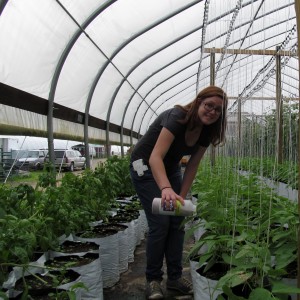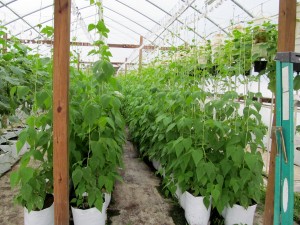Pest control is always on the mind of the grower and farmer. Pests, from the frolicking deer to the smallest of mites, create financial, ethical and ecological concerns. There’s a balance between managing an ecologically sensitive farm to minimizing financial loss. On top of that, farmers need to demonstrate an ethical concern about safety for them, their employees, the environment and most vitally, the consumer. Taking all of this into consideration, the utilization of beneficial insects (or bio-control) seems ideal.
Prior to spreading beneficials, there are a few steps. Firstly, identifying a problem or a lack of one is essential. With new varieties of plants comes different appearances at different ages. Imagine spending hundreds (or more) of dollars only to find out that a slight difference in appearance is occurring, not a detrimental problem. Secondly, the problem needs identified as being due to pests, diseases, the environment or nutrition. Thirdly, a treatment plan should be utilized. Fourthly, a prevention plan needs set into place. Although the initial goal is to save the crop, the long term goal is to prevent this problem from reoccurring.
On cucumbers and beans, a white splotchy pattern will occur with thrip infestations. It will look like jeans when bleach is splattered on them. Thrips are slender insects with fringed, toothy wings. These pesky bugs will pierce a plant and suck the contents out of the cell. Basically, imagine slurping a smoothie (the cell contents) out of a cup (the cell of the plant). Although thrips have a hard time flying, the will migrate around the greenhouse quite well due to the fan. We spread predatory mites (the beneficials) to control a variety of thrip larva and hatching eggs. Luckily for us, a few days after the infestation was spotted, we had a cloudy, rainy day with 55-65 degree temperatures to spread the mites.
To spread the mites, I would walk down the rows sprinkling a teaspoon of what looked like sawdust on the leaves of the plants. It was important to spread on lower leaves and leaves higher up on the stem to get a nice coverage of the plants. It was also quite tricky to reach some of the taller leaves on cucumber plants. After I finished spreading the mites, I left the empty bottles in the middle of the rows in case any mites were still inside.
To help prevent huge infestations, companion planting was utilized (intentionally or not). Basically, instead of having a greenhouse monoculture, most greenhouses had a mix of plant species and families. In one house, lettuce, tomatoes and herbs were placed together while radishes, beans, cucumbers and basil were placed together in another. This creates a more diverse ecosystem that will attract a variety of pollinators, including many beneficial parasitic wasps.




Speak Your Mind